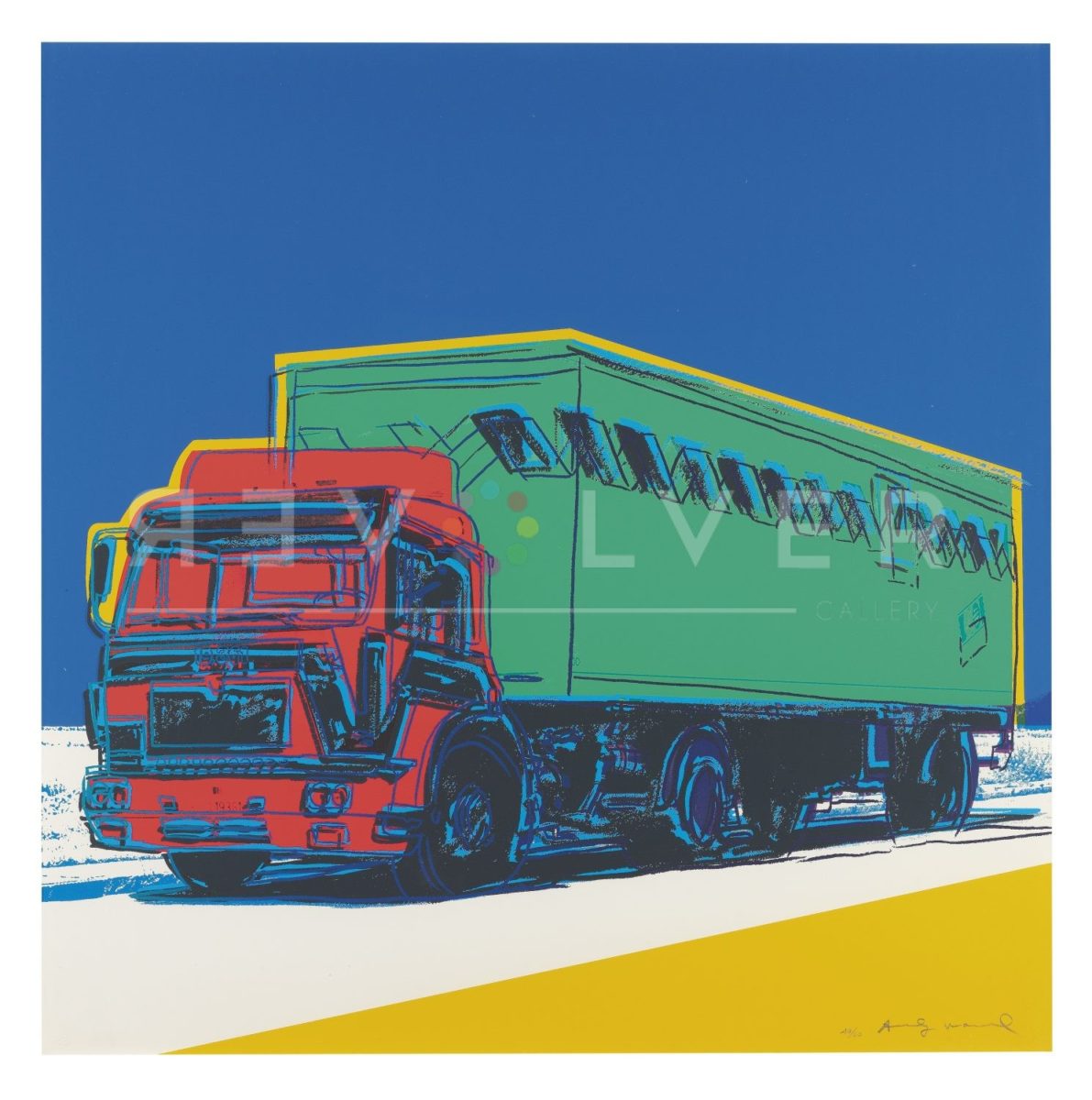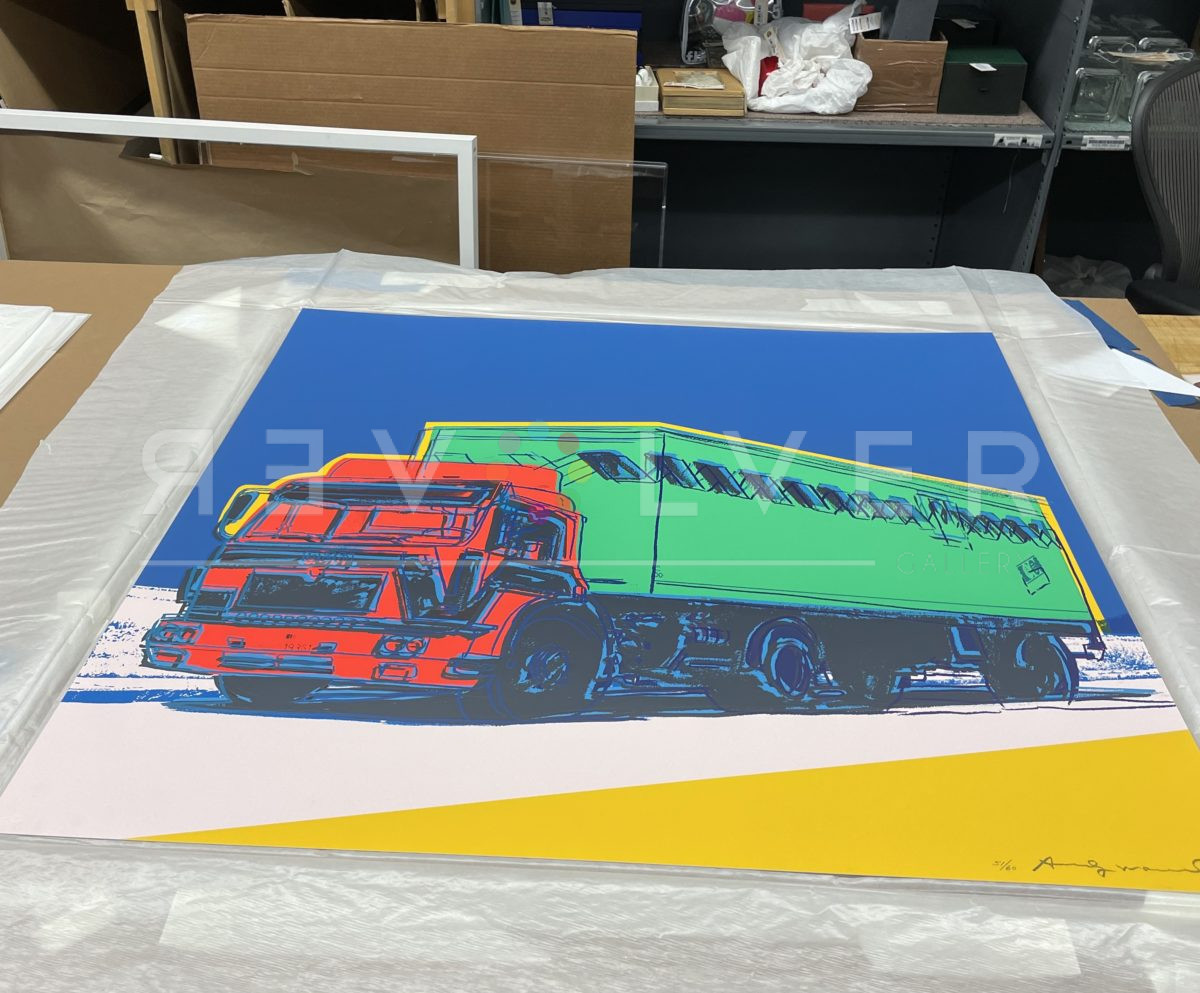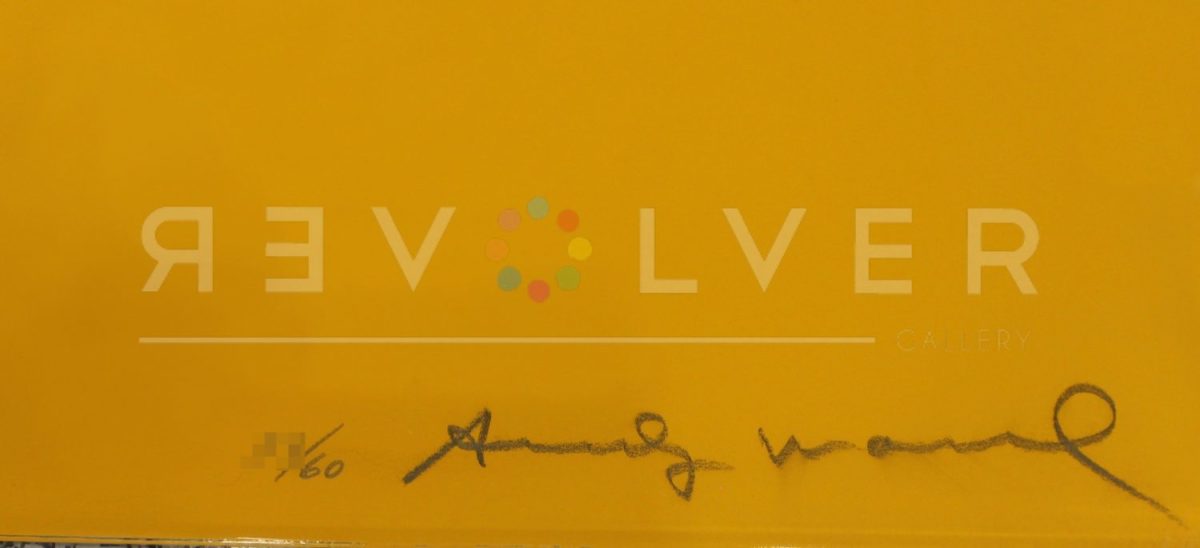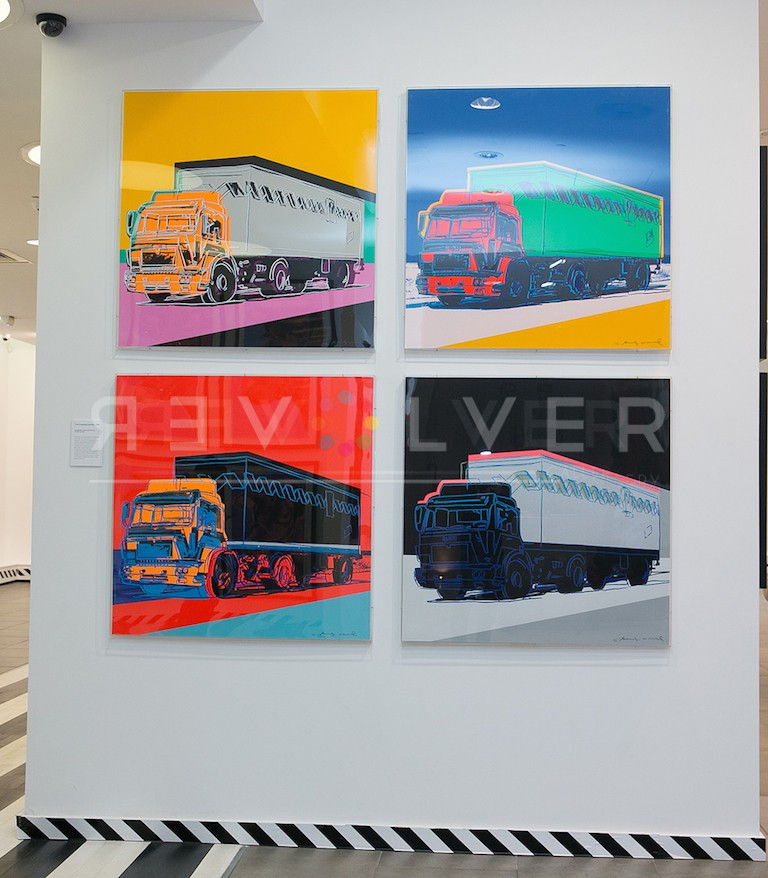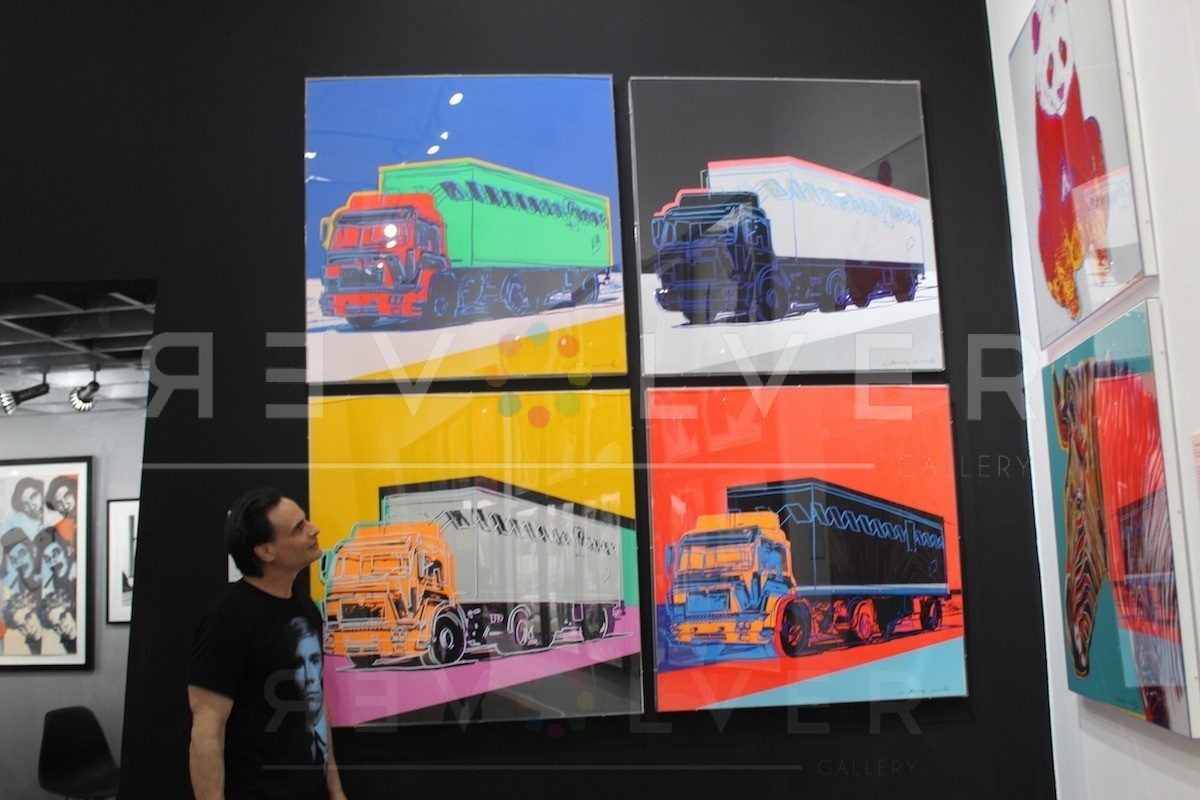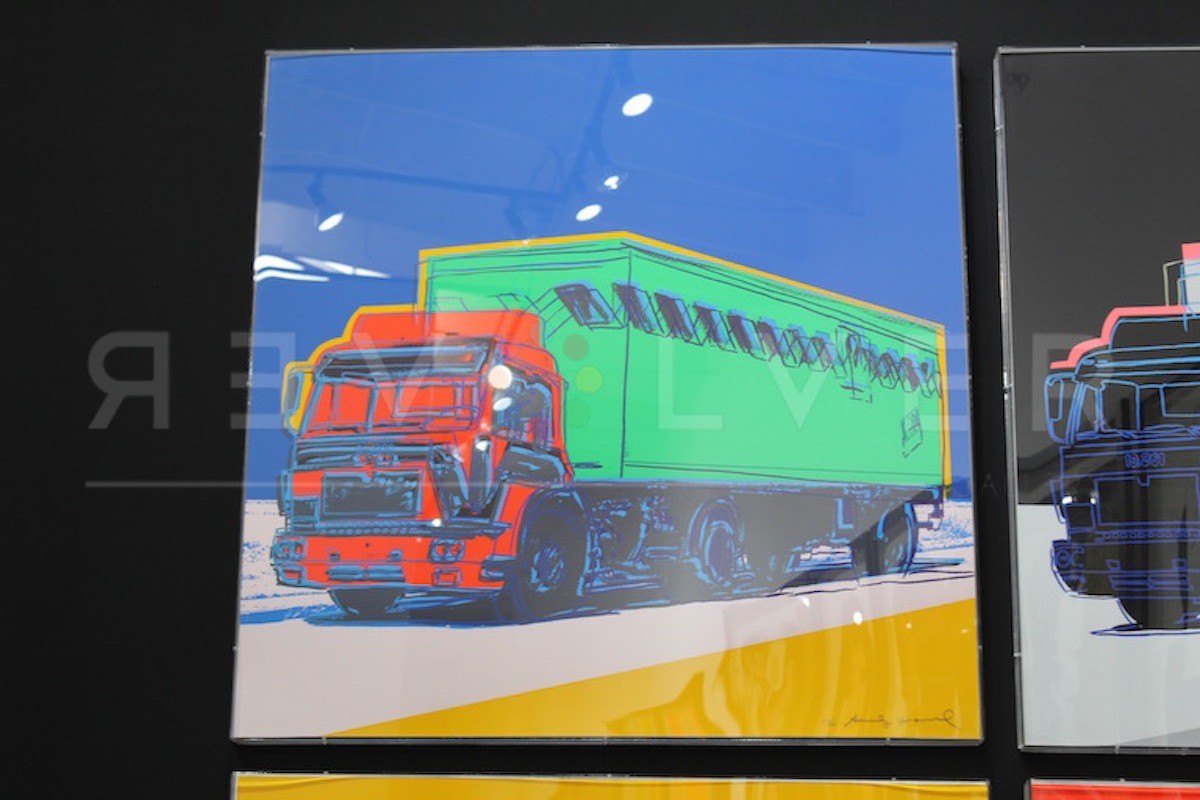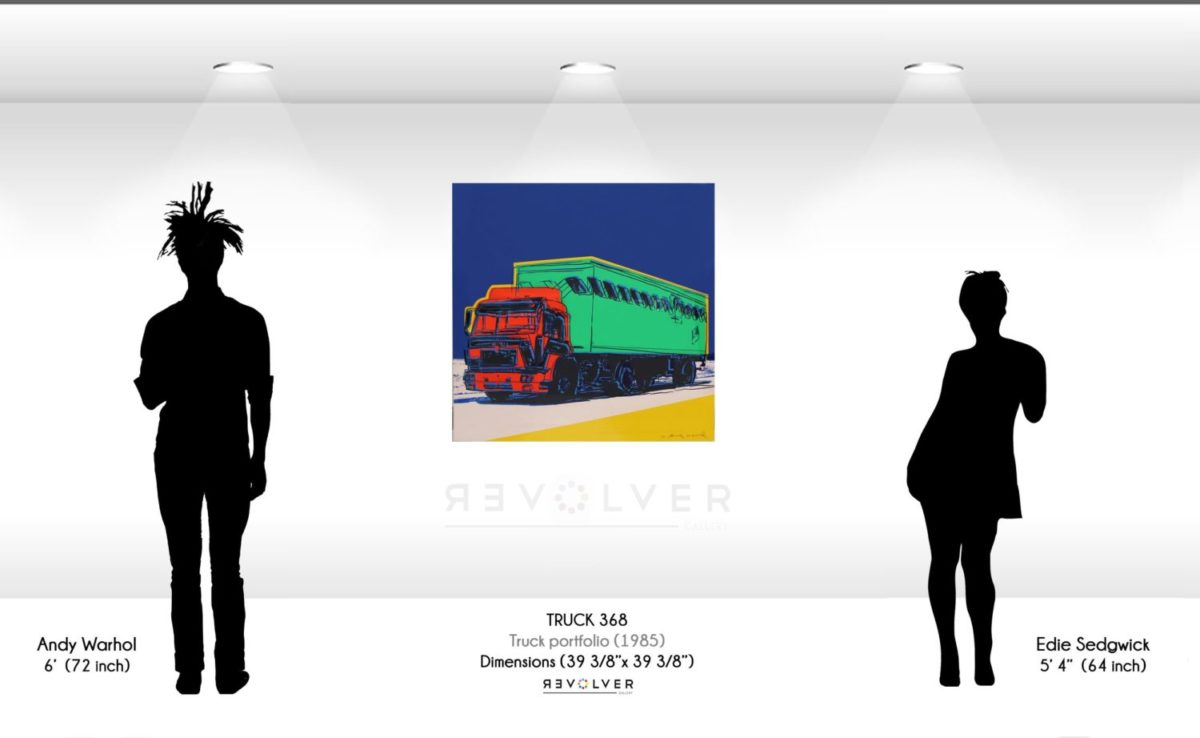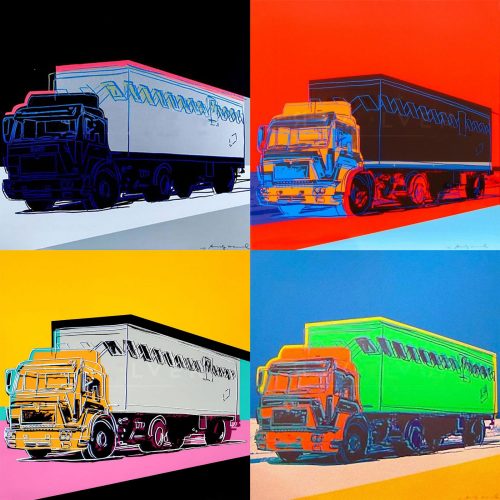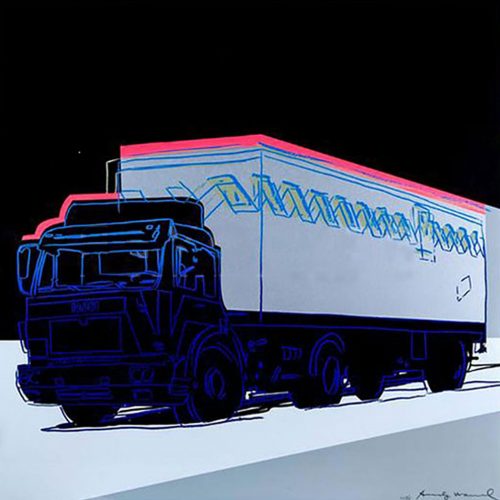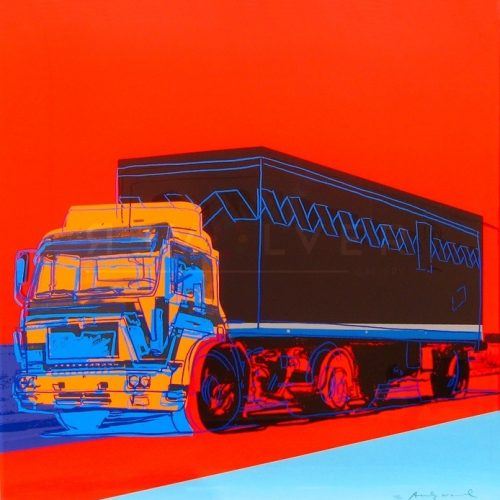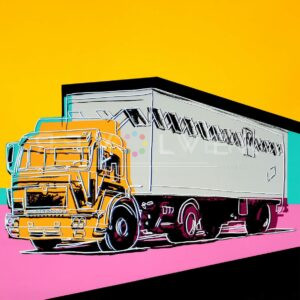Truck 368 by Andy Warhol is the second screenprint from Warhol’s four piece Truck series. The series was commissioned to celebrate the 20th International Road Transportation Union (IRU) World Congress, in cooperation with the Bundesverband des Deutschen Guterfernverkehrs (also known as the Federal Association of German Long-Distance Goods Transport). Truck 368 is a silkscreen on Lenox Museum Board, printed by Warhol’s friend and principle printmaker, Rupert Jasen Smith, in New York.
Truck 368 makes a dramatic entrance with it’s firetruck-red cab and complimentary mint green cargo container. The red evokes the heroism of a vehicle like a firetruck or an ambulance, giving the truck more cavalry. Warhol outlines the truck’s body with a straight edged line in yellow, matching the diagonal line of the street in the foreground. Dark sapphire skies contrast against the vehicle’s yellow outline, creating a flow by accenting parts of the truck’s design and shadow.
Truck 368 plays heavily with vibrant, contrasting colors to enliven the structure of the truck. Simultaneously, the sketched fine details of the tires and cab soften it’s dramatic color composition and harsh angular lines, humbling the massive, sometimes formidable structure. Hints of colors in Truck 368 accent parts of the other three pieces as well. However, unlike darker compositions Truck 369 or 370, this work is light everywhere and focuses more on the driving landscape than just on the vehicle itself.
Trucks with cargo containers were indeed a common sight on the road, especially as the 1980s Reagan Era economy led to booming business and increased cross-border transport. Yet their prosaic aesthetic never collided with high art until Warhol created this extravagant interpretation. Similar to screen printing soup cans or shoes, Warhol managed to transform an everyday object (moreso an American icon like the truck) into renowned art.
During that same decade, the International Road Transportation Union (IRU) also began working more closely with the United Nations and it’s policy making, creating a supportive regulative system that led to more mobile trade and commercial success. The optimism and prosperity of such a project is present in the bright, vibrant composition. To endow Truck 368 with such indulgent colors, Warhol built up the color using multiple layers of screenprinting, exemplary of an artistic veneration for the truck as a concept.
Warhol’s repetition in the Truck portfolio could be an analogous representation of their repetitive presence on roads. Moreover, by featuring the same vehicle and artistic process in each print, Warhol mimics the manufacturing process used in the automotive industry. Knowing that the assembly line and mass production heavily influenced Warhol, his production of Truck 368 likely celebrates the identity of American manufacturing and business. As Warhol famously said, “The reason I’m painting this way is that I want to be a machine, and I feel that whatever I do and do machine-like is what I want to do.”
Truck 368 ultimately characterizes the livelihoods of its commissioners and paints a scene that celebrates how transportation forges connections for us all. Although Truck is a later project, the series exhibits the fascinations for industry and commerce that characterized some of Warhol’s most groundbreaking work.
Photo Credit: Andy Warhol’s polaroid titled Mack Truck taken in 1982. Unique gelatin silver print, 8 × 10 in. 20.3 × 25.4 cm. Courtesy of the Andy Warhol Foundation for the Visual Arts.

